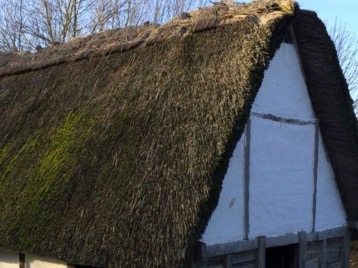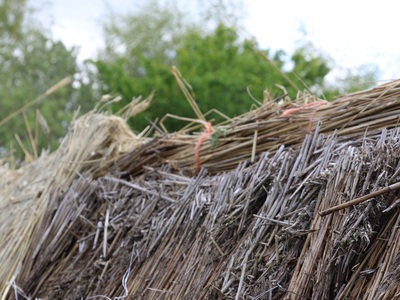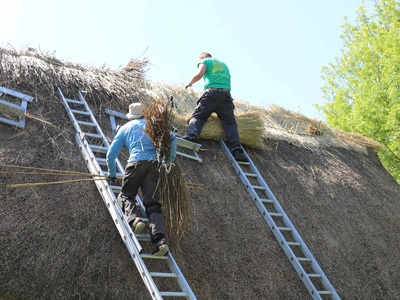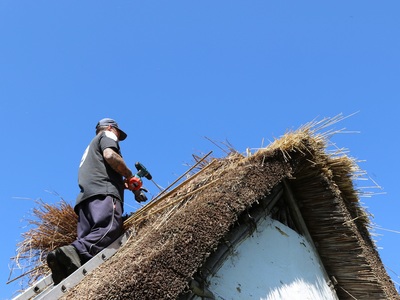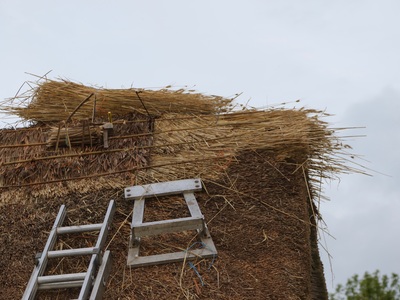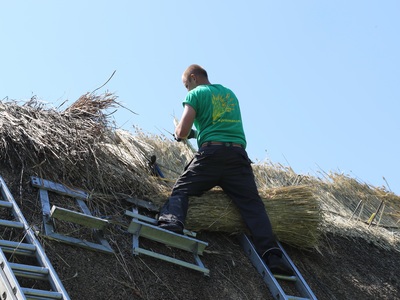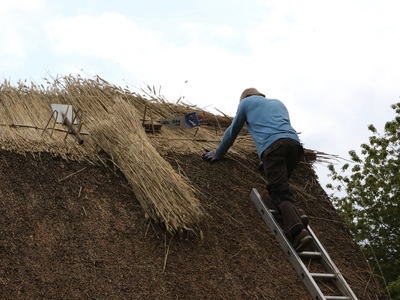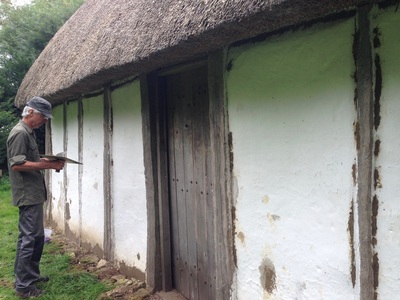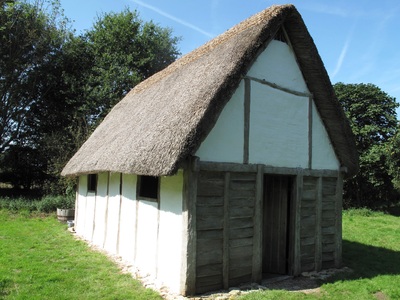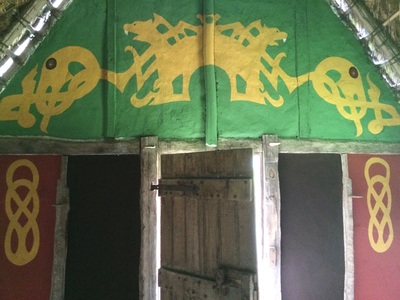The ThatchThe problemIt became obvious from early 2015 that the thatch, which had been keeping Saxonhouse safe from the elements for many years, was failing. The weather and the attentions of birds had finally destroyed the ridge and the sides of the thatch itself was looking worse for wear. This is to be expected with thatched buildings: they tend to need re-thatching every fifteen years.
The problem was the expense: could we really afford this expensive process as Saxonhouse isn't a commercial project and doesn't support itself? A crowd funding campaign was suggested and, after some initial qualms, was agreed in principle. Then we needed to call in the experts to see what the cost would be. To our delight - and surprise - the thatcher said that the building did not need a complete re-thatch, just the ridge replacing and an overall facelift for the sides. The campaign went ahead to raise the money and succeeded. We called in the thatchers to begin. See here for news of our campaign and backers. |
The process
In April 2016 the thatchers - Peter Brugge, Master Thatchers (North) Ltd - arrived to start work. The team of three stripped off the remains of the original ridge and replaced it with a more sleek ridge made of sedge. They then renovated the sides by pulling out decaying reed and replacing it with new to tighten and strengthen the sides. Finally they cleaned all the surface, raking off debris, dirt and moss. The whole process took about three days.
The result was really impressive. Now Saxonhouse is both beautiful again and fit to withstand many more years of weather.
The result was really impressive. Now Saxonhouse is both beautiful again and fit to withstand many more years of weather.
The Walls
After the thatch was fixed, it was time to repair the walls. The two long walls, wattle and daub in construction, needed re-mudding and then painting over with lime again, a process that should really be done every year or so.
The 'mud' is a mixture of soil, horse dung and lime with chopped straw added for larger areas. It felt strange, after our much loved Friesian Wayland's contribution to the original mix, to have to go to a neighbour for the horse poo but sadly Wayland died two years ago.
After the daub, the walls needed a good coat of lime which will help to keep out the weather. It is always good to see Saxonhouse smart and shining in the sunshine and know that come winter it is secure and snug against wind, rain and snow.
The 'mud' is a mixture of soil, horse dung and lime with chopped straw added for larger areas. It felt strange, after our much loved Friesian Wayland's contribution to the original mix, to have to go to a neighbour for the horse poo but sadly Wayland died two years ago.
After the daub, the walls needed a good coat of lime which will help to keep out the weather. It is always good to see Saxonhouse smart and shining in the sunshine and know that come winter it is secure and snug against wind, rain and snow.
The Interior
The external repairs completed, we set about beautifying the interior. Again cracks and holes needed re-mudding and then all the walls were re-limed back to (almost) pristine whiteness. Finally the wall pictures, copied from Anglo-Saxon decorations on jewellery and swords, were repainted in the lovely pigment colours. And so . . . .

